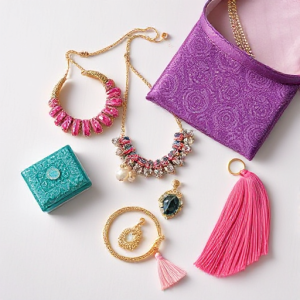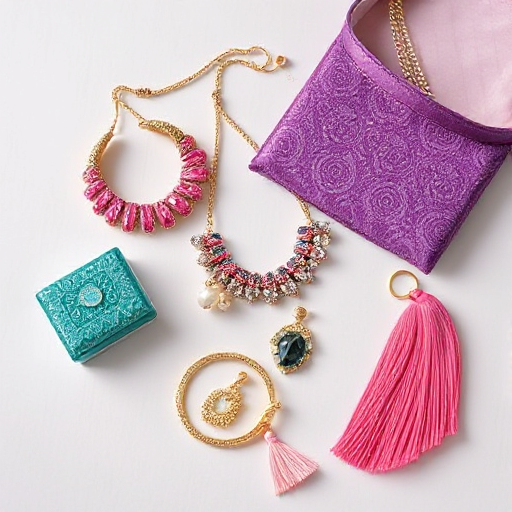
The fashion industry is an ever-growing, multi-billion-dollar market, and fashion accessories are a significant part of this sector. With the rise of e-commerce, selling fashion accessories online has become a lucrative business opportunity. Whether you’re a seasoned entrepreneur or a beginner looking to start an online store, this guide will provide you with essential insights into the world of selling fashion accessories online.
1. Understanding the Market
Before diving into the online business, it’s crucial to research and understand the fashion accessories market. Identify current trends, consumer preferences, and the most popular types of accessories such as:
- Jewelry (necklaces, bracelets, rings, earrings)
- Handbags and wallets
- Sunglasses and eyewear
- Scarves, hats, and gloves
- Watches and belts
- Hair accessories
Analyzing competitors and understanding customer demands can help shape your business strategy.
2. Choosing Your Niche
Selecting a niche is essential for standing out in a competitive market. Some potential niches include:
- Handmade or artisanal accessories
- Eco-friendly and sustainable fashion accessories
- Luxury and designer accessories
- Affordable and trendy fashion items
- Tech-integrated accessories (e.g., smartwatches, Bluetooth-enabled eyewear)
- Gender-specific or unisex fashion accessories
Focusing on a niche helps in targeted marketing and brand positioning.
3. Setting Up Your Online Store
To start selling, you need a platform to showcase your products. Here are some popular options:
- E-commerce Platforms: Shopify, WooCommerce, BigCommerce, and Wix.
- Marketplaces: Amazon, eBay, Etsy, and Poshmark.
- Social Media Stores: Facebook Marketplace, Instagram Shopping, and TikTok Shop.
Consider factors like ease of use, customization, scalability, and transaction fees when choosing your platform.
4. Sourcing Your Products
Depending on your business model, you can source fashion accessories through:
- Manufacturing: Producing your own products or working with manufacturers.
- Wholesale Suppliers: Buying in bulk from wholesalers.
- Dropshipping: Partnering with suppliers who fulfill orders on your behalf.
- Handmade Creations: Selling self-made accessories if you are an artisan.
Research suppliers for quality, reliability, and pricing before committing to one.
5. Creating an Engaging Brand
Branding is essential to differentiate your business. Consider these key elements:
- Logo and Branding Colors: Create a visually appealing and memorable brand identity.
- Website Design: A user-friendly, aesthetic website enhances the shopping experience.
- Brand Story: Tell a compelling story about your business values and mission.
- Packaging and Presentation: Attractive packaging can enhance customer experience and encourage repeat purchases.
6. Effective Product Listing and Descriptions
High-quality product listings can drive sales. Ensure:
- Clear and high-resolution images: Show multiple angles, close-ups, and lifestyle images.
- Compelling product descriptions: Highlight key features, benefits, materials, and care instructions.
- Competitive pricing: Research competitors and set prices that align with your target audience’s expectations.
7. Marketing and Promotion
Effective marketing is essential for driving traffic and increasing sales. Consider the following strategies:
- Social Media Marketing: Use platforms like Instagram, Facebook, Pinterest, and TikTok to showcase products.
- Influencer Collaborations: Partner with influencers to reach a larger audience.
- SEO (Search Engine Optimization): Optimize product descriptions and blog content to rank on search engines.
- Email Marketing: Send promotional emails, discounts, and newsletters to engage customers.
- Paid Advertising: Use Google Ads, Facebook Ads, and Instagram Ads to target potential buyers.
8. Managing Orders and Fulfillment
Smooth order management and fulfillment lead to satisfied customers. Ensure:
- Reliable Shipping Providers: Use USPS, FedEx, DHL, or other logistics partners.
- Fast and Efficient Delivery: Offer different shipping options, including express delivery.
- Order Tracking: Provide customers with real-time tracking updates.
- Returns and Refunds Policy: Have a clear and fair return/exchange policy.
9. Customer Service and Engagement
Excellent customer service fosters brand loyalty. Implement:
- Live Chat Support: Assist customers in real-time on your website.
- Social Media Engagement: Respond to queries and comments promptly.
- Loyalty Programs: Offer discounts and rewards for repeat customers.
- Customer Reviews: Encourage and showcase customer feedback to build trust.
10. Scaling Your Business
Once your business gains traction, consider expansion strategies such as:
- Expanding Product Line: Introduce new accessories and collections.
- Selling Internationally: Offer worldwide shipping to tap into global markets.
- Investing in Automation: Use automated tools for inventory, marketing, and customer service.
- Partnerships and Collaborations: Collaborate with brands, designers, or retailers to expand your reach.
Selling fashion accessories online is a profitable venture with the right strategy, branding, and marketing. By selecting a niche, leveraging e-commerce platforms, and engaging in effective promotion, you can establish a successful online business. Stay updated with fashion trends and continuously innovate to keep your brand relevant in the ever-evolving industry. With persistence and creativity, you can build a thriving fashion accessories brand online.
